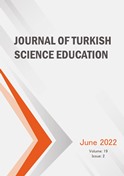The Effects of Science-On-Web Learning Media on Junior High School Students’ Learning Independency Levels and Learning Outcomes
Keywords:
Learning independency, learning media, learning outcomes, science-on-webAbstract
This research aimed to examine the effects of science-on-web learning media on grade 8 students’ learning independency levels and learning outcomes of ‘excretion system’ topic. Through a quasi-experimental research method within non-equivalent control group design, 70 grade 8 students drawn from Tanjungpinang, Indonesia participated in the study. Pretest and posttest were carried out before and after the teaching intervention. Two intact groups were assigned as the experimental and control classes (35 by 35). The experimental class was exposed to the science-on-web learning media, while the control one was instructed through the electronic module. Data were collected through a learning independency observation sheet and a learning outcomes test. This research showed that the experimental class significantly performed better at learning independency levels and learning outcomes than the control one.


